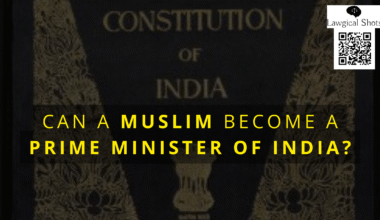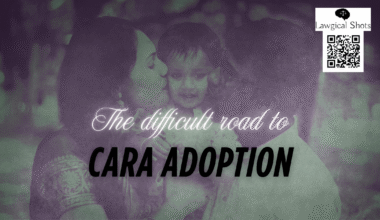We were in a small town; I was a toddler when this neighbour got married to a businessman in Delhi. She was very friendly to my mother, and that is why I got to see her a lot whenever she was in town. She had a son, and a daughter a few years later. The family was complete, and she seemed the same happy-go-lucky as ever. We moved out to another city and the occasional meets were rare. Then one fine day, we heard from someone that she was living with her maiden family after divorce with her husband. This news hit us like a bolt. Yes, we had been aware of Grey divorce in India, but it sounded more like a Bollywood problem.
Now that we heard of a known getting divorced after 24-25 years of marriage, the reality hits harder. Let us understand the rise in Grey divorce and how it seems to change the social fabric in India.
What is Grey Divorce?
Divorce in general is the legal term for dissolution of marriage. The term “Grey Divorce” somewhat links divorce with hair greying, depicting age. In other words, grey divorce can be understood as dissolving marital union after the age of 50, or after being married for more than a decade or two. Divorce is usually common in the first few years of marriage, when couples are new to each other’s company, and choose separation due to various reasons. After a few years, they get used to each other, or say their life, as it may be. However, this understanding of marriage is somewhat proved wrong with the rise in grey divorces in India. Though there could be various reasons for the phenomenon, not one analysis applies to all, be it celebrities or common people.
Explore the Difficulties of Getting Divorce in India
Celebrity Grey Divorces in India
Bollywood has been the pioneer for almost all of us, introducing the term “Grey Divorce”. There have been several celebrities who had been the “happily married couples” until they announced their divorce. While Govinda-Sunita divorce is not confirmed yet and new claims pop every now and then, and Aishwarya-Abhishek Bachchan divorce news seems to be a sham, there is a list of Bollywood actors who ended their more than decade old marriages. Some of the names are listed below:
- AR Rehman’s divorce after 29 years of marriage
- Hrithik Roshan’s divorce after 14 years of marriage
- Malaika Arora-Arbaaz Khan divorce after 19 years of marriage
- Amir Khan-Kiran Rao divorce after 16 years of marriage
- Kamal Hassan-Sarika divorce after 16 years of marriage
Reasons for Rise in Grey Divorce
There are various assumptions as to why the grey divorce in India is on the rise. While there is nothing like “one size fits all” in this context, there are some common reasons in most of them, as listed below:
- No Longer a Taboo: People who are around the age of 50 as of now, divorce used to be a taboo in the era when they got married. With this understanding, they forced the marriage for years, hoping that things will get better, or with the understanding that ending marriage was not an option. Now that divorces are quite common in India, those who kept mum and compromised their lives find hope in the word “divorce”. There is life after divorce, a concept which was not so talked about earlier. Hence, societal acceptance enhanced the scope for taking the big step at this age.
- Financial Independence of Women: While there are negative as well as positive views on this, there is no doubt that a financially independent woman is more likely to choose her life over dependency upon a toxic relationship. Previously, working women with financial independence was not so common. In recent years, women have become more in charge of resources even in their middle age.
- Empty Nest Syndrome: In India, people get married for family, have children, and their lives roam around their needs and laughter. Once the children grow up, they are more likely to move out for higher studies or jobs, as seen in recent trends. In such cases, couples find themselves emotionally distant from each other. The emotional disconnect and incompatibility is more obvious, and grey divorce seems to be a more appropriate option.
- Prolonged Marital Issues: They say that there is an end to everything, and endurance in marriage also counts. Married people who endure their spouse’s neglect, physical or emotional abuse, or infidelity also have their limits. While they usually endure it all for kids, the kids being grown ups and busy with their lives accompanies an end to this patience.
- Prioritizing Self: In recent years, there is a growing sense for one’s own happiness. It is a common understanding that you cannot keep the people around you happy, unless you are happy from within. It usually happens with women who had been enduring for years, giving up upon their happiness, ambitions, etc. for the family. When self-realization hits, grey hair does not bother, and giving oneself another chance to live life becomes a priority.
- Lack of Intimacy: Being in a marriage is all about emotional and sexual intimacy towards the spouse. When people are in their middle-age, sexual intimacy usually takes a back seat for one, and lack of acceptance for another. If this all is accompanied with the absence of emotional intimacy, a marriage cannot survive.
Deduction
In India, marriage has been all about sacred unions, eyeing at forever once tied. However, there is nothing dreamy as they show in dramas and movies. A marriage is more like a partnership, where two people come together to run a family, emotionally supportive of each other, and teaming up for the finances as well. Those marriages suffering silently for years seem to have found their voice, as reflected through the rise of grey divorce in India. With prioritizing self as against social expectation, it could be a positive reflection of the liberalized social fabric.








